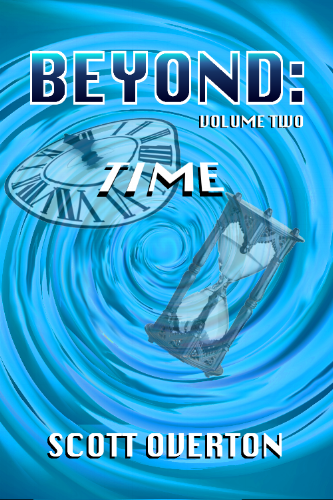In my last blog post I announced the publication of BEYOND: Stories Beyond Time, Technology, and the Stars, a print collection of fifteen of my science fiction and fantasy stories, some of which had been previously published in magazines and anthologies across North America, and some not. For extra interest (because I enjoy that kind of thing myself) I also wrote a bit about the first five stories’ origins, intent, and publishing history. So here’s a little about the rest of the collection.
“Tartarus Rising”: I’m a huge fan of disaster stories and apocalyptic fiction, so I was delighted when this story was chosen for an anthology called Doomology in 2011. Such high-stakes stories provide an opportunity to show the best and worst of humanity as nothing else can. Alien invasions are a dime a dozen, but what if there was a race of beings sharing the planet with us, yet clever enough to remain hidden all these centuries even from our scientific instruments? I’m pretty sure the idea for “Tartarus Rising” came from a traumatic childhood event of mine involving a mysterious stranger who suddenly appeared at a window of our house on a dark night when my parents were away. If you have a frightening memory that haunts you, write a story about it!
“Marathon of the Devil”: I’d read an article about the famous Marathon des Sables in Morocco, a grueling race that makes you question the sanity of the participants! Naturally, being an SF writer, I imagined such a thing on an alien planet. But why put yourself through something like that? Because of a deep desire to be somebody special? Just for fun, I decided to have things work out right by going all wrong.
“Body Of Opinion”: We think of memory as being a function of the brain exclusively, but there has been lots of research into genetic memory, especially lessons and behaviours learned by one generation and passed on to the next through genes. What if other memories are encoded into our DNA? Combine that thought with ever-improving organ transplantation techniques and you end up with this story about a man who discovers that his new body he thought was cloned was actually “previously owned” and harbours a dark secret. A premise like that cried out for a noir fiction approach, which was a lot of fun to do.
“Democracy”: Our current political systems are so badly broken that we end up getting terrible leaders elected by much less than half of the people who voted. Yet we live in an era unlike any other in history, when virtually every citizen of developed nations has some access to the internet. If we wanted to, we could have true democracy, in which everyone could vote on every important issue of government. That’s what I’ve created in the fictional country of Devis Varta, although with tongue in cheek. Because, humans being humans, our lofty dreams almost never turn out the way they should.
“Saviour”: It’s easy for me to see the influences on this one. The movies Deep Impact and Armageddon both came out in 1998 as the world worried about asteroid strikes that could devastate the planet. But by the time I felt the urge to write my own story about saving the world from a giant killer rock, I’d seen the 2006 movie Sharkwater about how humankind is decimating the shark population and endangering the entire ocean ecosystem. Humans are a threat to pretty much every form of life on Earth these days. So a real hero might not do the expected.
“Node Of Thought”: I’ve done a lot of research into the mind…consciousness…the nature of thought—it’s been at the centre of a number of my novel plots. There’s no one who really knows what thought is, what consciousness is. There are only people who think they do. One day, embroiled in thought (as they say) I asked myself: what if thought has a physical form we know nothing about? Could we trail it behind us like hairs and dandruff? Could it be gathered like cosmic dust by some powerful source of energy? What would happen if you encountered something like that in deep space in a spaceship that responds to thought commands? Nothing good!
“The Cleansing”: Disaster again, inspired by the worrisome population cycles we’ve witnessed recently among creatures like frogs, bats, and especially bees, on whom we depend for so many of our food crops. Rouging (now more often called roguing) is a process of removing plants from crop fields when they’ve produced unwanted mutations. In coming years I believe we’ll be able to engineer crops to cull themselves to maintain their genetic purity. But what if, by pure bad luck, all of the crops were to enter such a “die-out” phase at the same time?
“The Rift”: Although I consider myself a spiritual person, this is my only story that really reflects that in a big way. And, because I’m a science junkie, I struggle to reconcile theory and experimental evidence with belief. Not surprisingly, that takes my mind in strange directions. One editor rejected this story because he thought it was too much like a Star Trek episode. I take that as a compliment!
“Hurricane”: I’m all in favour of renewable energy—solar, wind, tidal—and if we could harness the energy of hurricanes we’d hit the mother lode. Perhaps as much as the total worldwide generating capacity of humanity, in one storm! Writing a story about that, you just have to place your protagonist right in the thick of things, especially if he hates to fly, which gave me an excuse to research the amazing crews who willingly enter such hellish conditions in Hurricane Hunter aircraft. Plus, as I speculated about what would happen, I realized that I had the answer to one of the greatest occult mysteries of them all!
“Once Upon A Midnight”: Some years ago my good friend, prolific author/editor and all-around-nice-guy Mark Leslie Lefebvre issued a call for SF stories inspired by works of literature. I came up with one, and Mark liked it, but that anthology project didn’t come to pass. That was OK because some months later it was accepted for an anthology called In Poe’s Shadow (2011). Fast forward a few years, and Mark was invited to edit an edition of the well-respected Tesseracts series of anthologies and chose to resurrect his literary-inspiration idea. He also still wanted my story. So “Once Upon A Midnight” got a second life in one of Canada’s most successful SF franchises (Tesseracts 16: Parnassus Unbound) and I was thrilled. Deliberately over-the-top, it’s black humour with a dark warning at its core.
Once again, you can buy BEYOND: Stories Beyond Time, Technology, and the Stars through Amazon or Barnes & Noble in the US, or in Canada through Chapters/Indigo or Amazon.ca, or via many online outlets worldwide. Or if you're devoted to your favourite independent bookstore, ask them to order it through the book distributor Ingram. Have a great read!








